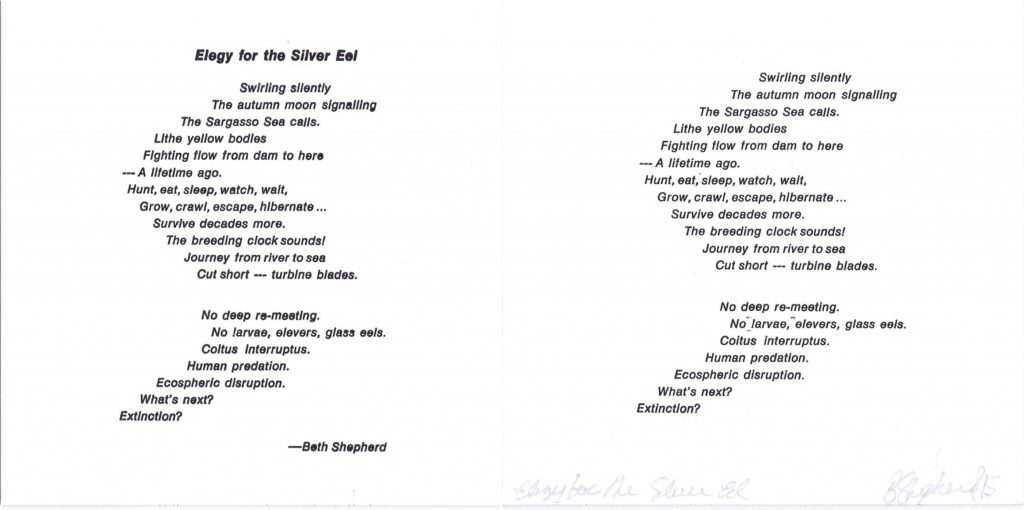I have recently become interested in concrete poetry – where the visual form augments or sometimes supplants the linguistic meaning. On doing further research I learned that concrete poetry is usually associated with the international Concrete Poetry Movement of the 1950s and 1960s. The movement emerged from the work of Eugen Gomringer of Switzerland and the Brazilian Noigandres group, and quickly spread around the world. Although the Concrete Poetry Movement lost its momentum by the 1970s, its legacy and influence live on.
Typically, concrete poets work with the visual power of the page that results from the shape and placement of typographical elements vis-à-vis the whitespace. Applying the notion of concrete to any artform acknowledges its materiality and how that materiality informs its function and meaning. I felt this could be useful in drawing analogies that aid in understanding the materiality of the altered landscape, the loss of species, and the overarching politics of climate change.
This spring I had the opportunity to do some typesetting at the Carleton University Book Arts Lab as part of a creative writing workshop on climate change. In March and April, I typeset my poem “Elegy for the Silver Eel” in a visually expressive form.
Intrigued by duality of Concrete Poetry at the intersection of language and image, I typeset and printed:
- “Elegy for the Silver Eel” as a poem – the shaped text with a title on the top and author at the bottom right, in a literary fashion; and
- Elegy for the Silver Eel as an object of visual art, where I removed the typeset title author and hand-signed each print at the bottom in the manner of a fine art print.

The font for both versions is Helvetic Italic which I thought contributed to the sense of flow. Once typeset, each version was printed using the Vandercook letterpress on 6-inch square artist tiles (Strathmore Bristol, vellum finish, 100 lb.). To read about my process, please click here.
Many thanks go to Nadia Bozak, professor in the English Dept., and Larry Thompson, Master Printer at the Book Arts Lab, Carleton University, for this opportunity.
